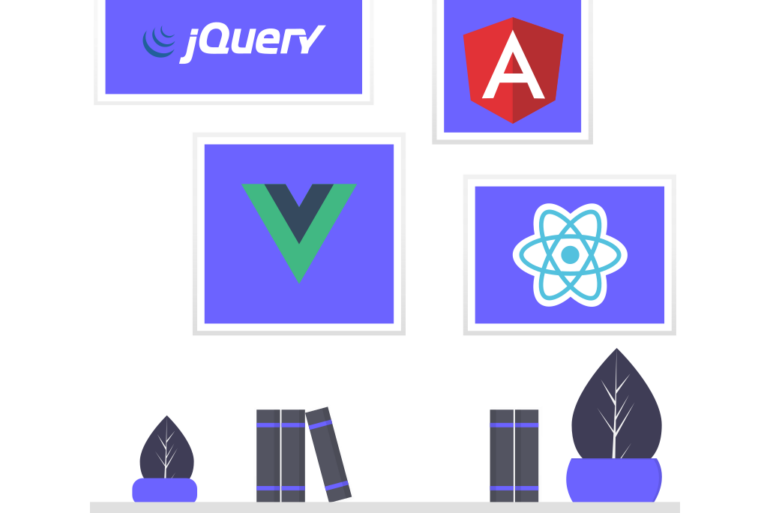JavaScript is a lightweight, flexible, object-oriented programming language. It is a text-based programming language that can be used for programming both the front and Backend parts of a website or any web application. It is an interpreted and just-in-time compiled programming language with first-class functions that help the programmer make the web page more appealing and attractive to the user. HTML and CSS are languages that give structure and style to any web page but with JavaScript, the web pages are made interactive and engaging.
What is JavaScript?
JavaScript is a simple, high-level, multi-paradigm, object-oriented programming language that is well-known as a scripting language for web page development. It is a prototype-based scripting language that is both dynamic and supports imperative, object-oriented and functional programming styles. Objects are created programmatically in this language, by attaching properties and methods to otherwise empty objects at runtime. Whereas in other programming languages like C++ and Java, the same is done with the help of syntactic class definitions. In JavaScript, once an object is created it can be used as a prototype for creating similar objects.
It is an easy-to-learn powerful scripting language, that is used for controlling the web page behavior and also to make the web page more appealing and interactive to the user. The basic syntax of the language is quite similar to that of the Java and C++ language which reduces the addition of new concepts and makes the language easy to learn and understand. JavaScript is a prototype-based, object-constructing dynamic language that has capabilities of runtime object construction, variable parameter lists, dynamic script creation, function variables, object introspection and source code recovery. JavaScript programs are capable of de-compiling function bodies back into their source text.
History of JavaScript
In the years 1993 and 1994, popular web browsers such as Mosaic and Netscape came into existence. The founder of Netscape was Marc Andreessen who after developing Netscape realized that to make the web more dynamic, a glue-like scripting language that could make HTML more stable was required. So, to address the point, Netscape company in the year 1995 recruited a programmer named Brandan Eich intending to implement a scheme programming language to the web browser. In September 1995, Brandan Eich in just 10 days scripted a new language and named it Mocha. Later the marketing team changed the name to Live-script but due to some reasons in December 1995 the language was renamed as JavaScript. Since then, the JavaScript programming language has flourished and gained present-day popularity.
Need of JavaScript
JavaScript is a language that can be used for both Frontend and backend Development. This is the reason that makes this language the talk of the town. As all the Frontend Developers need to have knowledge of any Backend language and the Backend Developers need to have knowledge of any one of the Frontend languages, this language as dealing with both ends is worth learning. It also is a great language for beginners as it is a higher-level language that also involves very little setup. The JavaScript community is large and plenty of employment opportunities are available while dealing with this programming language.
Features of JavaScript
JavaScript is a translated language and not a compiled language. It is an interpreted, simple yet detailed, full-fledged programming language that when applied to an HTML document enables dynamic interactivity on websites and web applications. There are many features of JavaScript programming language like:
- All popular graphical web browsers have adopted the JavaScript language as the language provides in-built execution environments.
- JavaScript follows the syntax and code structure of the C programming language. Also, the basic syntax of the JavaScript language is similar to the C++ and Java languages which makes JavaScript a structured programming language.
- JavaScript is a translated language and not a compiled language. The JavaScript Translator which is embedded in the browser is responsible for translating the JavaScript code for the web browser.
- JavaScript is a simply typed language, where depending on the operation to be performed certain types are implicitly cast.
- It is an object-oriented programming language that uses prototypes other than the classes of inheritance features and supports both dynamic and imperative functional programming styles.
- It is a lightweight, flexible, multi-paradigm, scalable and interpreted scripting language for web page development.
- JavaScript is a case-sensitive language.
- JavaScript is supportable in almost all operating systems including Windows, Linux, macOS, etc.
- It provides good control to JavaScript users over the web browsers.
- Programmers with the help of JavaScript can build modern web applications to interact directly without having the need to reload the web page every time.
- Traditional websites make use of JavaScript to provide users with several forms of interactivity and simplicity.
Application of JavaScript
JavaScript is a language that can be used for both Frontend and backend Development. It is a language that is used to create scalable, dynamic, prototype-based, interactive and user-friendly web applications. JavaScript has some cons as well as being so flexible language, objects created in this programming language are slow and difficult to scale and maintain. Still, the community that makes use of the JavaScript programming language is quite large. JavaScript can be used to build many types of software and sites which include:
- Website,
- Mobile applications,
- Desktop applications,
- Games,
- Web servers,
- Presentations,
- Client-side validation,
- Dynamic drop-down menus displaying date and time,
- Displaying pop-up windows and dialogue boxes like an alert dialogue box, prompt dialogue box and confirm dialogue box,
- Displaying clocks and much more.
Today many databases such as MongoDB, and CouchDB make use of the JavaScript programming language for their web browsers as their scripting and query language. To learn more about the JavaScript programming language and its popularity and existence, do visit the DockLearn website.





